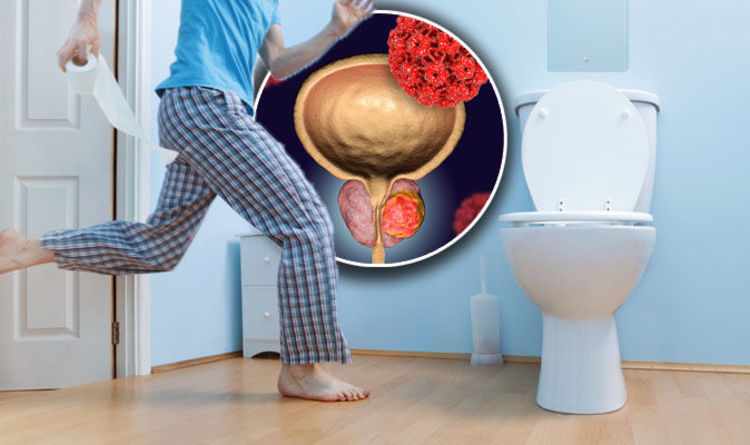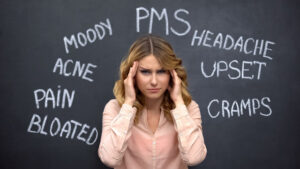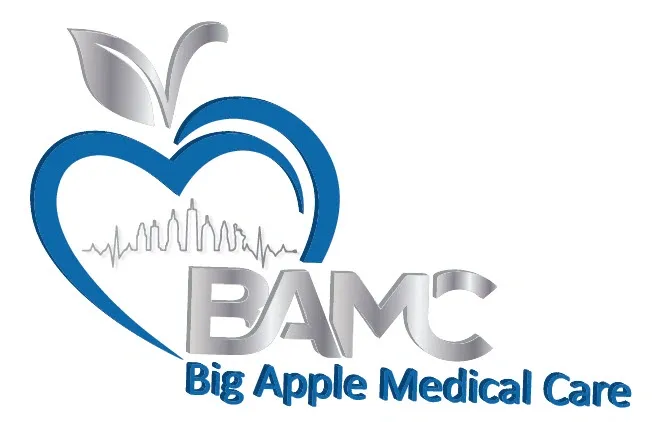Urinary symptoms—such as sudden urges to urinate, frequent trips to the bathroom or waking up repeatedly at night—are often dismissed or considered an inconvenient part of aging. Yet these signs may point to something more significant: a condition known as Overactive Bladder (OAB). In men, OAB carries particular nuances due to anatomy and co-existing conditions, but the good news is that effective diagnostic tools and modern treatments are now available.
In this blog we’ll explore what OAB really means in men, the underlying causes, how it’s diagnosed, and the wide spectrum of treatment options—ranging from behavioral modifications to advanced therapies. At Big Apple Medical Care, we believe in empowering men with knowledge so they can take control of their urinary health and quality of life.
Understanding Overactive Bladder in Men
What is OAB?
Overactive bladder is not a disease per se, but a syndrome—a cluster of urinary symptoms centered on an urgent need to urinate, often with increased frequency and sometimes incontinence, even when the bladder is not full.
Specifically, the international definition (by the International Continence Society) describes OAB as urgency, with or without urge urinary incontinence, usually associated with urinary frequency and nocturia (nighttime voiding) in the absence of an obvious other pathology.
Why this matters for men
Although OAB affects both sexes, men face some unique challenges. One of the main issues is that urinary symptoms in men often are assumed to stem solely from the prostate—specifically Benign Prostatic Hyperplasia (BPH) or bladder-outlet obstruction (BOO). This can lead to misdiagnosis or delayed diagnosis of true bladder overactivity.
In fact, studies show the prevalence of male OAB is significant: about 10-16% of men may experience OAB symptoms. When left unaddressed, OAB can impair quality of life, disrupt sleep, hamper social activities, and even affect sexual and emotional wellbeing.
Causes and risk factors
What drives OAB in men?
There is no single cause for OAB, especially in men—it’s often multifactorial. Some of the key drivers include:
-
Bladder-outlet obstruction (BOO): When the urethra is partially blocked—most commonly due to prostate enlargement—the bladder must work harder, muscle changes may occur, and overactivity of bladder muscle (detrusor) can result. Many men with OAB have concurrent BOO.
-
Enlarged prostate (BPH): As men age, the prostate often enlarges, contributing to obstruction, urinary symptoms and secondary bladder dysfunction.
-
Neurological factors: Diseases or injuries affecting the brain, spinal cord or peripheral nerves—such as strokes, Parkinson’s disease or multiple sclerosis—can disturb the signalling between the bladder and the brain.
-
Bladder muscle/nerve dysfunction (detrusor overactivity): The bladder muscle may contract involuntarily (even when not full) due to altered nerve input or heightened sensitivity.
-
Other contributing factors: Urinary tract infections, bladder stones, prior pelvic surgeries, constipation, high-fluid intake (especially caffeine/alcohol), obesity, and medications can all contribute.
Risk factors to note
-
Advancing age is strongly correlated with OAB.
-
Presence of BPH or urinary obstruction increases risk.
-
Lifestyle factors such as excessive caffeine/alcohol, smoking, obesity.
-
Co-morbidities like diabetes or neurological disease.
Understanding these causes and risk factors is the first step toward early recognition and meaningful management.
Symptoms and how to recognise OAB in men
Common symptoms
Men experiencing overactive bladder may report:
-
A sudden and uncontrollable urge to urinate (urgency) that is hard to ignore.
-
Frequent urination – more than the “normal” 4-8 times per day. Some sources cite more than 8 times per day as suspicious for OAB.
-
Nocturia – waking up at night one or more times to void.
-
Urge urinary incontinence – leakage of urine when the urge to void cannot be delayed.
-
Sometimes, a feeling of incomplete bladder emptying or mixed symptoms (both storage and voiding). Because in men, voiding problems are common, differentiating is key.
Things to pay attention to
Men may dismiss symptoms as simply a prostate issue or normal aging. But signs that warrant medical evaluation include:
-
Significant bothersome urgency/urination interfering with daily life or sleep.
-
Urinary incontinence (leakage) especially if new.
-
Sudden worsening of familiar urinary symptoms.
-
Associated symptoms such as pain, burning, blood in urine (which may signal other pathology).
-
Symptoms in men of any age—not just older men.
Diagnosis: What does the evaluation involve?
At Big Apple Medical Care we believe in a systematic approach to ensure accurate diagnosis—especially in men where overlapping conditions can complicate the picture.
Initial assessment
Based on the latest guidelines (e.g., the American Urological Association/SUFU guideline) the diagnostic evaluation should include:
-
A detailed medical history—both urinary and general health.
-
Physical examination including abdominal and genital/rectal exam (to assess prostate/obstruction).
-
Urinalysis to exclude infection, micro-hematuria (blood in urine) or other obvious pathology.
Voiding diary / symptom tracking
Recording a bladder diary (fluid intake, time of voids, urgency, leakage) over several days helps quantify the problem and offers useful baseline data.
Specialized testing
In many men, further tests are needed to distinguish between bladder overactivity versus outlet obstruction (or a mix). These may include:
-
Post-void residual (PVR) urine measurement: via ultrasound or catheter to assess how much urine remains after voiding. High residual suggests incomplete emptying.
-
Uroflowmetry: Measures rate and volume of urine flow—slow or intermittent flow may suggest obstruction.
-
Cystometry / Urodynamic studies: These assess bladder pressure and volume during filling and voiding, and can demonstrate involuntary detrusor contractions. Especially useful when the diagnosis is unclear or treatment is planned.
-
Ultrasound of bladder and prostate: To evaluate prostate size, bladder wall changes, bladder stones, etc.
-
Cystoscopy: In certain cases, to examine the bladder lining and exclude bladder tumours or other abnormalities.
Differential diagnosis
In men, important to consider and rule out other causes of urinary symptoms:
-
Lower urinary tract symptoms (LUTS) primarily from BPH/BOO.
-
Urinary tract infection.
-
Bladder or prostate cancer.
-
Neurologic disease, prior pelvic surgery or radiation.
-
Medications causing increased urinary output (diuretics) or irritative bladder.
Only after a comprehensive evaluation can a targeted treatment plan be crafted.
Modern treatment options: A stepped/individualised approach
As with many chronic conditions, the management of OAB in men is typically layered—starting with the least invasive strategies and advancing toward more intensive therapies if needed. The goal is not just symptom relief, but improving quality of life, reducing sleep disruptions, avoiding complications (e.g., skin breakdown, recurrent UTIs, social isolation) and tailoring to each patient’s context.
Behavioural and lifestyle interventions (First-line)
Often overlooked but foundational.
-
Fluid and dietary management: Limiting bladder irritants (caffeine, alcohol, carbonated drinks, spicy foods) and managing fluid intake (not too much, not too little) can help.
-
Bladder training: Increasing the time between voids—gradually weaning the bladder to hold more urine before feeling the need.
-
Pelvic floor muscle training (Kegel exercises): Though more often emphasised in women, men also benefit from strengthening pelvic floor and urethral sphincter muscles—especially in urge-incontinence.
-
Weight management and physical activity: Obesity and increased abdominal pressure can worsen OAB symptoms. Weight loss and exercise reduce bladder pressure.
-
Addressing constipation and bowel habits: A full or dysfunctional bowel can exert back-pressure or irritation on the bladder, triggering symptoms.
-
Lifestyle modifications: Quitting smoking, managing nocturnal fluid intake, and ensuring good sleep hygiene help.
Notably, these behavioural changes are low-risk and, in many men, can significantly reduce symptoms—either alone or in combination with other therapies.
Pharmacotherapy
When lifestyle and behavioural measures are insufficient, medications come into play.
-
Antimuscarinics (anticholinergics): These medications block the action of acetylcholine at muscarinic receptors in the bladder, reducing involuntary bladder contractions.
-
Beta-3 adrenergic agonists: Newer class of drugs that relax the bladder muscle by stimulating β3-receptors, thereby increasing bladder capacity and reducing the urgency/frequency.
-
Alpha-blockers and 5-alpha-reductase inhibitors: While these are primarily for BPH/BOO, they are often relevant when OAB symptoms in men overlap with prostate-related obstruction. For example, if BPH is contributing to OAB, treating the prostate may improve bladder symptoms.
-
Combination therapy: In certain men with both BOO and bladder overactivity, combining prostate medication + bladder medication may be warranted.
It’s important to review side effects (e.g., dry mouth, constipation, cognitive effects—especially in older men) and individualise therapy.
Minimally invasive and advanced therapies (“Third-line”)
For men who do not respond adequately to behavioural + drug therapies, several advanced options exist:
-
Botulinum toxin (Botox) injections into the bladder muscle: Temporarily paralyzes overactive detrusor contractions, reducing urgency/frequency.
-
Sacral nerve stimulation (SNS): A small implanted device sends mild electrical impulses to sacral nerves (which govern bladder function), modulating the signals so that bladder activity is more controlled.
-
Percutaneous tibial nerve stimulation (PTNS): Less invasive neuromodulation—tiny electrical pulses delivered via needle near the ankle (tibial nerve) help modulate bladder nerve signalling.
-
Surgery: In selected cases—especially when prostate obstruction or other anatomic defects contribute—surgical correction (e.g., transurethral resection of the prostate (TURP), laser prostate ablation) may relieve both BOO and OAB symptoms.
These therapies are best pursued under specialist guidance (urologist) after detailed evaluation of risks, benefits and patient priorities.
Tailoring treatment for men at Big Apple Medical Care
At Big Apple Medical Care we recognise that OAB in men requires a holistic, patient-centred approach. Here’s how we tailor management:
-
Comprehensive assessment: We take the time to review urinary history, bladder diaries, review prostate health, medications, neurologic history, lifestyle factors and co-morbidities.
-
Shared decision-making: We discuss with you the pros/cons of each management level—behavioural, medication, advanced therapy—so you are partner in the decision.
-
Lifestyle first mindset: While medications and other treatments are available, we emphasise that many men benefit significantly from behavioural changes—thus reducing reliance on multiple drugs.
-
Monitoring and adjustment: If initial therapy (say, bladder training + pelvic floor + medication) is not sufficient after a defined timeframe, we guide progression to next steps.
-
Integration with prostate/voiding care: Because many men have overlapping benign prostatic enlargement or bladder-emptying issues, we coordinate with urologic expertise to ensure no element is missed.
-
Quality of life focus: OAB is not just about numbers (voids per day) but about how it affects sleep, work, leisure, relationships and mood. We assess and aim to improve overall wellbeing.
Practical tips and take‐home messages
-
Don’t assume urinary urgency, frequency or leakage are simply “part of aging.” These are treatable symptoms and deserve evaluation.
-
Keep a simple bladder diary for 3-7 days: note fluid intake, caffeine/alcohol, voiding times, leakage episodes, urgency levels. This helps your provider understand your pattern.
-
Behavioural modifications really matter: watch caffeine and alcohol, fluid timing (don’t drink large amounts right before bed), pelvic floor exercises, scheduled voiding/urination.
-
Maintain a healthy weight and lifestyle. In men, increased abdominal/visceral fat can worsen bladder symptoms by increasing pressure on the bladder.
-
Be aware of medications you take that may irritate the bladder or increase urine production (e.g., diuretics).
-
If you have known prostate enlargement and urinary symptoms, discuss both prostate/voiding and bladder storage parts of the problem with your clinician.
-
Don’t delay care: untreated OAB can lead to sleep disruption, work impairment, social isolation, emotional distress and increased risk of urinary tract infections or skin problems from leakage.
Conclusion
Overactive bladder in men is far from being just a benign “old-age” annoyance. It is a complex syndrome that can significantly impact quality of life—but the good news is that we are not powerless in the face of it. Through proper evaluation, diagnosis, and a step-wise treatment plan—beginning with behavioural strategies and advancing through medications and, if needed, advanced therapies—many men regain control, restore confidence and improve daily life.
At Big Apple Medical Care we’re committed to partnering with you in this process: to listen, evaluate, explain your options and tailor a plan specific to your body, symptoms and lifestyle. If you’ve been tolerating urinary urgency, frequency or leakage, remember: help is available.
If you’d like to schedule a consultation, or have questions about whether your symptoms suggest OAB (or something else), we encourage you to reach out. Regaining bladder control isn’t just about convenience—it’s about living the life you deserve.







